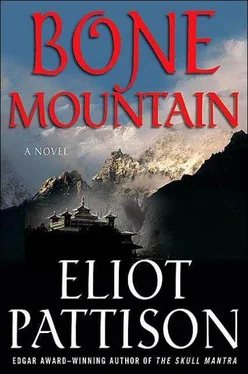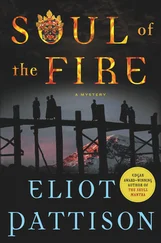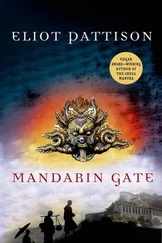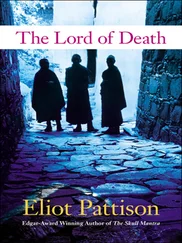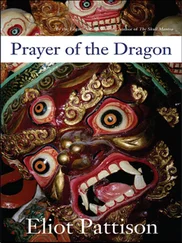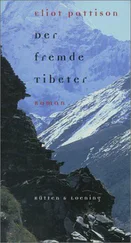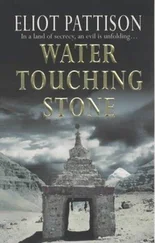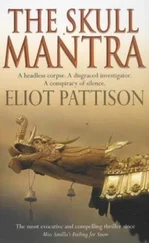Eliot Pattison - Bone Mountain
Здесь есть возможность читать онлайн «Eliot Pattison - Bone Mountain» весь текст электронной книги совершенно бесплатно (целиком полную версию без сокращений). В некоторых случаях можно слушать аудио, скачать через торрент в формате fb2 и присутствует краткое содержание. Жанр: Триллер, на английском языке. Описание произведения, (предисловие) а так же отзывы посетителей доступны на портале библиотеки ЛибКат.
- Название:Bone Mountain
- Автор:
- Жанр:
- Год:неизвестен
- ISBN:нет данных
- Рейтинг книги:4 / 5. Голосов: 1
-
Избранное:Добавить в избранное
- Отзывы:
-
Ваша оценка:
- 80
- 1
- 2
- 3
- 4
- 5
Bone Mountain: краткое содержание, описание и аннотация
Предлагаем к чтению аннотацию, описание, краткое содержание или предисловие (зависит от того, что написал сам автор книги «Bone Mountain»). Если вы не нашли необходимую информацию о книге — напишите в комментариях, мы постараемся отыскать её.
Bone Mountain — читать онлайн бесплатно полную книгу (весь текст) целиком
Ниже представлен текст книги, разбитый по страницам. Система сохранения места последней прочитанной страницы, позволяет с удобством читать онлайн бесплатно книгу «Bone Mountain», без необходимости каждый раз заново искать на чём Вы остановились. Поставьте закладку, и сможете в любой момент перейти на страницу, на которой закончили чтение.
Интервал:
Закладка:
As Khodrak and his nervous young attendants escorted them across the neatly raked earth of the courtyard it became obvious that the rebuilding effort had been confined to only certain elements of the gompa. The three central buildings appeared to be of sturdy new construction but along both sides, parallel to the outer walls, were several long single-story buildings of wood and pressed earth, most of which were neither new nor well-maintained. They would have been built to house the monks, Shan knew, and for the many meditation cells and minor deity chapels common to traditional gompas. They were all framed in wood, with small, empty porches where rows of prayer wheels would have traditionally hung. The first of these buildings on each side of the main courtyard had been restored to resemble the newer central buildings, giving an elegant atmosphere to the entry courtyard, and each had a long red plank bolted over its doorway, bearing the mani mantra in recessed gold letters.
The abbot led them under the sign of the low building on the left, then excused himself, announcing that one of the young novices would guide them around the compound. The nervous novice showed them pegs where they might hang their belongings and explained that Norbu was the main gompa of the region, with thirty-five monks and novices, boasting one of the highest Religious Affairs scores in all of Tibet.
"Scores for what, exactly?" Shan asked the novice as he led them outside, past the first two central buildings, the first of which he had quickly identified as the administration building, the second as the site of the dining hall and instruction rooms.
The youth gave a short grimace. "Proper conduct," he said, staring straight ahead. "Serenity," he added in a strangely somber tone, and quickened his pace. In the southeast corner of the high wall stood a long wooden building and a stable, both in severe disrepair. They seemed to be huddling together, the last survivors of an older, different monastery, resisting the bigger, more modern construction in the center of the gompa. Shan studied the buildings, which were made of planks joined with pegs. Shovels and rakes were laid against them. A pile of tattered baskets, with thick shoulder straps and padded loops extending out of their tops were stacked against the stable. Shan knew such baskets, for he had carried one nearly every day for four years, the long loop on his forehead, hauling rocks and gravel for government road builders. Past the buildings in the corner of the outer wall was a four-wheeled wooden cart and a huge pile of dung, more than ten feet high. Towering above the dung pile in the shade of the poplar trees that grew outside the wall was a tall, thin pole on which were fastened a long radio antenna and a satellite dish.
Nyma darted toward a huge cylinder hung in a scaffold near the center of the rear wall, a beautifully-crafted prayer wheel. But as she reached to touch it the novice called her away, and quickened his pace again to lead them past a row of vehicles parked along the wall, one a large van with the markings of an ambulance. A stern Han man in a sky blue uniform stepped around the end of the van, studying them intensely as he lit a cigarette.
"A special medical team from Lhasa," the novice explained in his nervous boyish voice. "They travel the countryside to help the local people. They have been on an extended assignment for weeks, coming from the south, near the Indian border, visiting local villages and camps. Seldom do the people get to see real doctors."
Real doctors. Lokesh looked back at Shan. Once there had been a college for real doctors, on the Plain of Flowers.
Tenzin had lingered by the mound of dung. As he approached, Shan saw that he had spread some of the mound's dry, dusty contents on his cheeks and pulled his hat low.
As they continued around the southwest corner a line of perhaps twenty Tibetans came into view inside a line of wooden stanchions threaded with rope. Half a dozen more men and women, mostly Han, all wearing the light blue uniforms, were grouped at the door of a small building, studying the Tibetans in line. The rongpa and dropka in line all wore the same anxious look as the young monk. They did not look sick. They just looked worried.
A man wearing a fleece vest called Lhandro by name, gesturing him closer as though he feared stepping out of line. But when Lhandro took a step toward the man the novice touched his arm to restrain him. "The doctors don't like anyone interfering," he said in an earnest tone. Shan heard one of the men in blue remind the Tibetans to have their papers ready for inspection.
The third of the central buildings was a longer lower structure that did not share the polished look of the first two structures. Patches of stucco were falling off the rear wall. Two red pillars straddled a thick wooden door, ornately carved with images of the Historical Buddha's life, that appeared to have been salvaged from an older building and set into a metal frame. They stepped into an entryway of rough plank flooring into a large chamber with a concrete floor. Half a dozen monks sat on cushions on the cold, hard floor, facing an altar topped with yellow plastic laminate on which sat a four-foot-high plaster statue of the Historical Buddha, Sakyamuni, painted in garish colors. Beside the Buddha was a small table with offering bowls and a smoldering cone of incense.
"Our lhakang," their guide explained. The gompa's main chapel.
Lokesh took one look at the statue and sat down among the monks. Their escort raised his hand as though to protest, then Nyma sat, and Tenzin.
"There are so few temples in the mountains," Shan observed pointedly.
The monk studied Shan and opened his mouth with an inquisitive glint, then, as Lhandro, too, joined the others on the floor, he shrugged. "Please be with us for the evening meal," he said. "Listen for the bell." He turned and stepped out of the chapel.
Shan sat with his friends for half an hour, breathing in the fragrant incense, studying a row of freshly painted thangkas on the wall, folding and unfolding his legs. But he could not find the mindfulness of meditation and finally stood and stepped outside, walking along a low abandoned wall that ran between the second and third buildings. It had once been a thick wall of stone, the foundation of a substantial building. He slowly circled the other two central buildings, noting with satisfaction the ropes of prayer flags that connected the upper corners of the first two buildings, then found himself before the prayer wheel at the rear of the grounds. It was beautifully crafted, six feet high and nearly three across, made of finely worked copper and brass. He touched it and, to his surprise it spun freely, turning almost an entire revolution. It was hung with heavy ball bearings, as though an engineer, not a monk, had designed it. Under it he noticed a plaque in Chinese and Tibetan. He had sometimes seen similar plaques, declaring that a wheel or statue had been donated by a youth league, or the friends of a gompa. But this one, like the giant wheel itself, was unlike any he had seen before. Operating hours 8A.M. to 8P.M., it said. He stared at it, not understanding, then heard someone at the old stable by the giant pile of dung. Stepping tentatively toward the sound he discovered a stocky monk speaking to a huge shaggy black yak that stood beside the wooden cart. The monk was shoveling dung from the pile into the cart, addressing the yak in a conversational tone as he worked.
After a moment Shan realized he had seen him before. He slipped into the shadow along the wall of the stable and watched the man, who was so absorbed in his work and discussion with the yak that it was five minutes before he noticed Shan. He acknowledged Shan's presence only by pausing a moment, ceasing to speak to the yak, then continuing his labor of transferring the dung to the cart.
Читать дальшеИнтервал:
Закладка:
Похожие книги на «Bone Mountain»
Представляем Вашему вниманию похожие книги на «Bone Mountain» списком для выбора. Мы отобрали схожую по названию и смыслу литературу в надежде предоставить читателям больше вариантов отыскать новые, интересные, ещё непрочитанные произведения.
Обсуждение, отзывы о книге «Bone Mountain» и просто собственные мнения читателей. Оставьте ваши комментарии, напишите, что Вы думаете о произведении, его смысле или главных героях. Укажите что конкретно понравилось, а что нет, и почему Вы так считаете.
